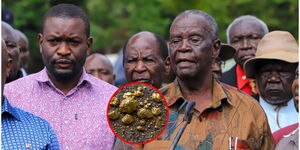The recent cases of disappearances have posed a daunting question about the procedure used by police officers from the time a suspect is apprehended until their case is concluded.
In the wake of the latest incident involving popular X influencer Albert Ojwang, Kenyans have become increasingly curious as to what exactly happens when the police summon or apprehend an individual on any suspicion and what rights the suspect has under the law.
As per the National Police Act and the 2010 Constitution, a specific legal framework must be followed in the detention of any person in Kenya. This framework is designed to uphold human dignity and prevent any blatant abuse of power.
Long before an apprehension is made, law enforcement must issue a summons, which is essentially a formal request requiring an individual to appear before an investigative agency such as the Directorate of Criminal Investigations (DCI).
The summons, according to the National Police Act, must be specific and lawful. It should state exactly why the individual is being summoned and the specific station they are required to present themselves to. In such instances, the suspect cannot be compelled to answer any question without his lawyer's presence.
It is worth noting, however, that police are legally allowed to detain an individual without a warrant under special circumstances. This can include instances when the officer witnesses the individual committing an offence or has reasonable suspicion that the person has committed or is about to commit a crime. Similarly, an officer can detain a suspect without a warrant to prevent a crime or secure evidence which can otherwise be destroyed.
The late Ojwang's case narrowly falls under this category, as the National Police Service confirmed he was nabbed on allegations of false publication. However, even in such cases, the law demands that officers adhere to strict procedures meant to safeguard the rights of the person being detained.
One crucial part of an apprehension which Kenyans tend to overlook is the fact that officers must identify themselves by name, rank and unit. By law, officers are also required to clearly state the reason for the apprehension in a language understood by the suspect.
More importantly, the individual must also be informed of their constitutional rights, including the right to be presented before a court of law within 24 hours of the apprehension. If the apprehension took place on a Friday, as is the case with a majority of high-profile incidents in Kenya in recent times, a court appearance is pushed to the following Monday.
The law is also clear on how an apprehension should be physically conducted. Officers are discouraged from using force unless it is absolutely necessary. Further, any force applied should be used proportionate to the situation.
Article 29 of the Constitution is also very clear about the use of force by law enforcement officers. It states that every person has the right to freedom and security of the person, which includes the right not to be subjected to any form of violence, whether from public or private sources, and not to be subjected to torture in any manner, whether physical or psychological.
In custody: Once in police custody, the apprehended individuals hold the right to communicate with a lawyer or family member. The individual is also entitled to medical attention without delay if needed. Further, as per the Constitution, the conditions of their detention must be humane, with access to basic needs such as food and proper sanitation.
If no formal charges are brought against an individual within 24 hours of his apprehension, the suspect is supposed to be released from custody.












